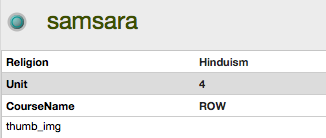Your question is welcomed. It is Victor, the Romance language scholar, cousin of Otto, the conductor and father of Werner, the actor. I had not heard of William, which is not surprising because I know next to nothing about chemistry. I assume you knew of him. In case he was related to the rest, talent was scattered often enough in the Klemperer family. Among the 7 siblings of Victor, Georg was a physician who consulted Vladimir Lenin.
Unlike Otto and Georg, who swiftly reached the USA in the early days of nazism, Victor endured it as a jew and secretely wrote about the newspeak of nazism in a book and two volumes of diaries. The latter were posthumously published in 1995 and I have a 2003 edition. I’ve been wanting to read them for sometime now, and this is when Tinderbox comes into the picture.
It occurred to me that the timeline view would be a good tool to see the evolution of his thoughts on specific issues over a 12-year span. Therefore I’ve taken the opportunity to read them. I’ve written my annotations in Tinderbox. I have also extracted and tagged over a hundred quotations. Instead of waiting for the new release of watch folders manages to transfer tags, and doesn’t delete them from previously dragged notes, I dragged and recorded a $StartDate for each of the quotations from the day stamped in the diaries. My first look into the evolution of his thoughts on topics under the heavy influence of the times is indeed interesting. And here comes my Tinderbox dilemma:
On the one hand, DEVONthink is the tool for sources but not apt at getting the insight a Tinderbox timeline permits on this kind of source. On the other hand, Tinderbox is better left for my own writing because of the maximum number of text notes it can handle without lagging. The number of notes that fit in a screen in map view is not an issue because I can isolate my annotations in their own container under each source.
This case makes clear that TB can play a role in the selection of sources to be included in my writing. Let me make clear that I have no intention to include a whole DT database of sources in TB, nor to include files of kinds other than text. Nevertheless, the number of notes in such a document would quickly run into the thousands. By the way, what is the approximate number of text notes a tbx document can comfortably handle?
A solution to this dilemma would be to analyse selected sources and do my own writing in two separate TB documents. Not just because of TB technical limitations but for the sanity of not being under the impression that one has written the big amounts of text one is handling. Not with links but through their URLs notes on both documents can be referenced -footnotes are a different issue, and I understand they must be in the tbx document dedicated to writing. This path of action seems reasonable to me but interdected because of TB’s current pseudo-URL schema: the path part of the URL makes it untrustworthy future wise. Are there any plans to change it?
Any practical insight from seasoned users into how to approach this task division will be welcomed. For these tasks I would like to keep my work among DT and TB for these tasks. I don’t want to integrate the otherwise good Scapple, iThoughts or Aeon. I am curious about what The Brain and Panorama can provide. But in general I would prefer not to add any other app into the picture, unless it provides clear advantages and few additional integration problems.
To sum it up, I think I am advancing nicely with Tinderbox on three fronts: the actual work practice with real text (@JFallows posts have been clearly helpful), the coding side (atbref is a great resource), and an interest on the theoretical part.
On the last front, I am half way through @eastgate’s Getting started with hypertext narrative. I find it dense when trying to put some of it into practice, and interesting. It made me laugh in agreement when I read that books are not natural objects nor God sent, but technological objects in evolution throughout history. Most of their paper form defenders miss the point that the evolution of books hasn’t been reduced to materials and their impact in wider access to them.
Innovations in book technology have impacted thought processes. From collective vocal recitation to an individual silent activity. Book ownership brought the possibility of re-reading. Division in chapters contributed to logical writing and reading, as opposed to a uniform text narrated from beginning to end. The spacing of text made possible alphabetic indexing. The innovation of subject-based indexing is not that far from nowadays tags. Neither is the technique of medieval commentary from digital annotations. Actually, I agree that the question is if consumer software has so far done more than mechanise already existing techniques, that previously required experts and were very time consuming, rather than having already achieved innovations of great impact. According to Ivan Illich’s In the vineyard of the text, Hugh’s Didascalion on the art of reading is a work that had a huge impact in the early 12th century, when a series of important text innovations appeared, and familiar with our current concerns.
As for difficulty, I happen to own a copy of Tinderbox and a manuscript unscripted in palm leaves. I have no doubt that Tinderbox is an easier tool to master for the art of writing.

